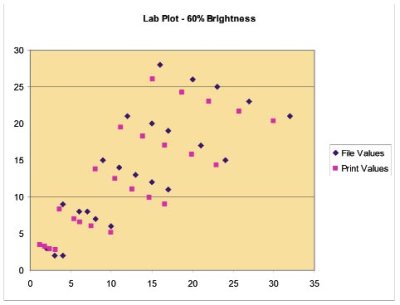articles/Paper/permatjetpapers-page5
Paper Chase - The Permajet papers - part 5 of 1 2 3 4 5 6
by Mike McNamee Published 01/02/2005

The Classic FineArt Series
This is the best known of the Permajet range consisting of 9 Fine Art Materials and a number of different surface textures. Every taste is catered for and you should not have to look outside the range to find something you like. The gamut volumes of the Classic range are in general higher than those of the ImageLife range although this difference is probably not detectable. The colour errors are on a par with the ImageLife materials.
The response of the papers to ink is actually quite similar and to confirm the point we tried printing each paper with the same profile built specifically for Portrait Classic.The result was inferior in almost every case and the average for the group was raised from 3.63 for bespoke to 3.83 for all papers using a profile for Portrait. This is quite an important implication in that it suggests that, for all but the most critical work, a profile or set of printing conditions that suited Portrait would work quite well on most of the other art materials in the Classic and Image Life range. The one exception is Matt Plus. For this material, the OBA content demands its own profile.

COLOUR ERRORS ACROSS THE GAMUT
Given that the errors in colour are quite small and the largest difference was between the resin coated media and the matt art media we calculated the errors across the whole colour gamut for both classes. Above, the errors are split down into the perceived error in hue, saturation and lightness for both RC media and art media .The data are arranged from the "reds" on the left around the colour wheel to the magentas on the right. Note that the errors peak in the blues and purples. The art papers have higher errors in most parts of the gamut, other than the all-important skin tones, where they are lower (see below, note everything is very slightly less saturated and mapped slightly closer to the cream of the papers). It is also significant that errors in hue in the blue parts of the spectrum are the most difficult for the eye to detect. Any assessment based on visual judgement would flatten out the top of the histogram a little further. As might be expected, a good chunk of the error reduction for the RC papers is in the lightness channel. The deeper maximum black provides more space for the profile to map the tones and this effect shuffles all the way through the gamut.
None of the data in any part of chart would give rise for concern or be a problem for real prints and images. High quality papers deliver high quality colours when used correctly!
Please Note:
There is more than one page for this Article.
You are currently on page 5
- Paper Chase - The Permajet papers page 1
- Paper Chase - The Permajet papers page 2
- Paper Chase - The Permajet papers page 3
- Paper Chase - The Permajet papers page 4
- Paper Chase - The Permajet papers page 5
- Paper Chase - The Permajet papers page 6
1st Published 01/02/2005
last update 09/12/2022 14:57:36
More Paper Articles
There are 0 days to get ready for The Society of Photographers Convention and Trade Show at The Novotel London West, Hammersmith ...
which starts on Wednesday 15th January 2025





